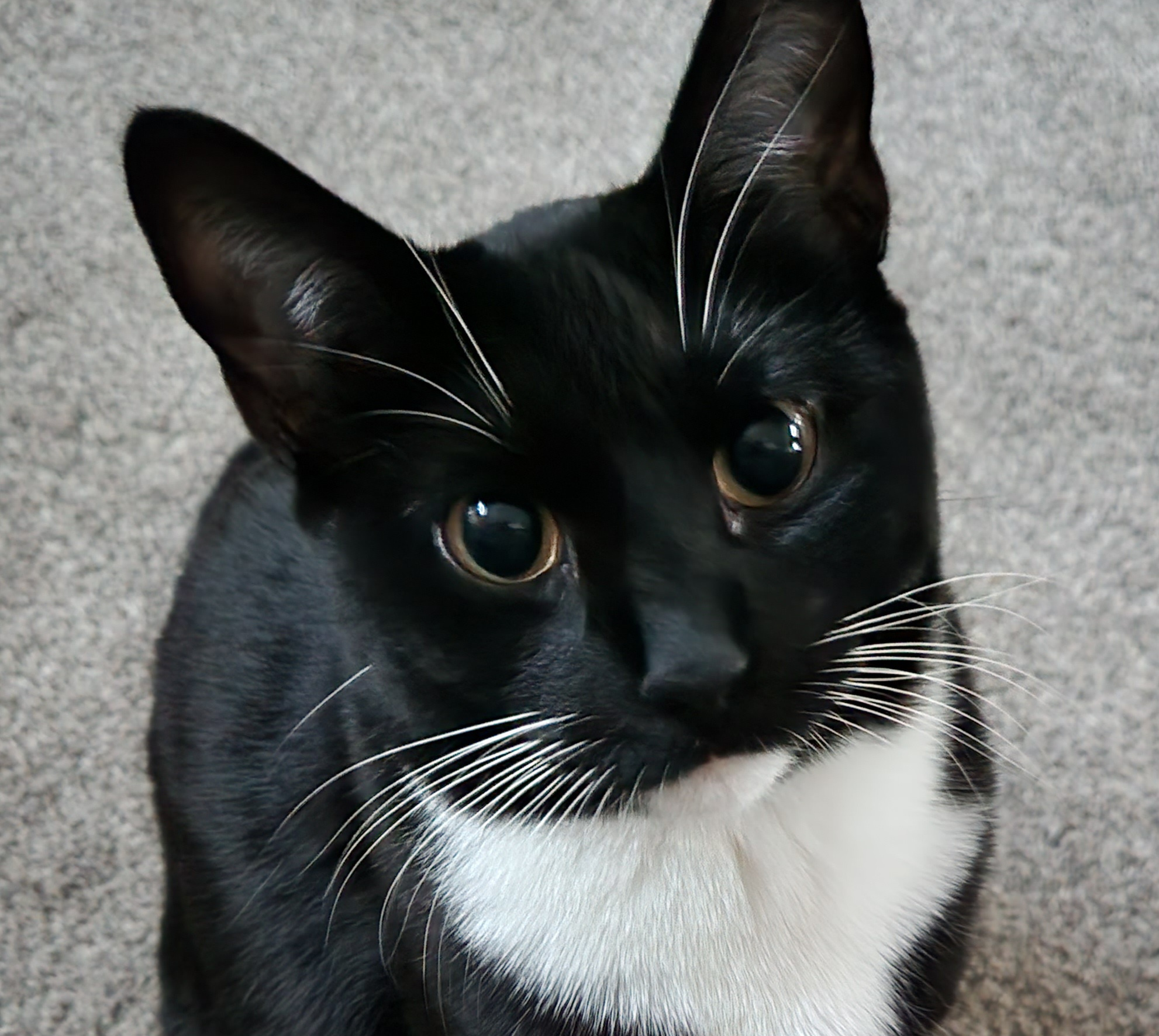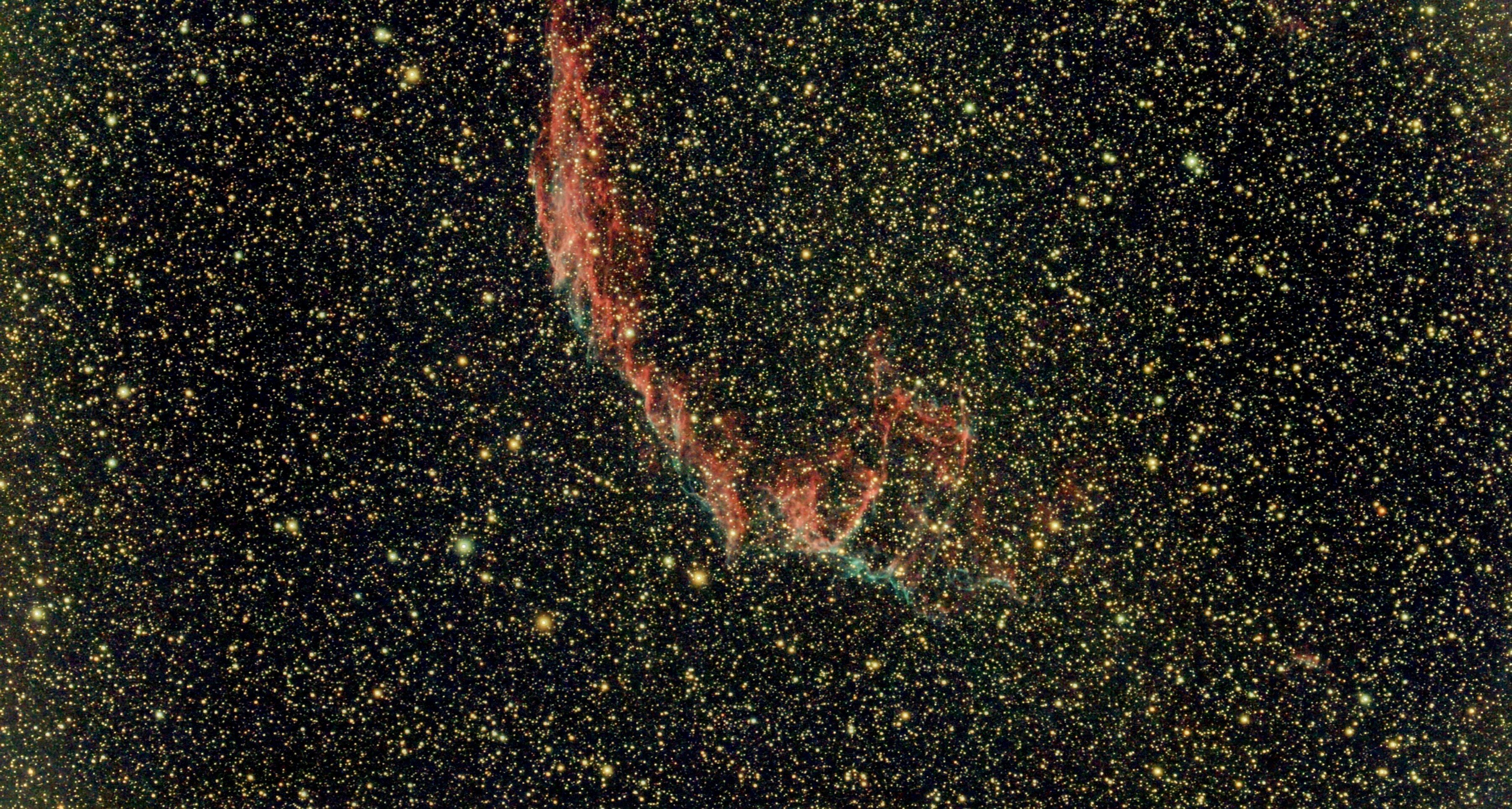Ultraviolet light can kill almost all the viruses in a room. Why isn’t it everywhere?::Can special lightbulbs end the next pandemic before it starts?
Without bothering to read the article, I look forward to sunburning my retinas like im at a crypto rave.
To be fair, nobody complained about getting COVID from that event.
The article does mention the issue of safety and how to address it actually
Joke aside, looks like they’re using a higher bandwidth of light, 222nm compared to more common 254nm uv for medical uses. It doesn’t penetrate the skin or eyes sufficiently to cause damage.
But will it activate my transitions lenses so I look like a cool guy wearing sunglasses indoors?
And bleaching all materials in the room. And slowly destroying anything made of paper or plastic or wood.
What if, and hear me out,
What if…
What if… we just ran them when people weren’t in the room? 🤯
Crazy what happens when you can come up with your own thoughts instead of parroting reddit comments ad nauseam.
What if… we just ran them when people weren’t in the room?
This is already a thing in many hospitals, and has been used extensively even before covid.
And there are also UV systems that can be added to air ducts to kill off airborne pathogens as well. But they’re not cheap and not commonly used outside of medical facilities.
Won’t work in spaces where people are around all day, like offices, but it doesn’t matter. The eye and skin dangers are already addressed for the most part. The major remaing question is ozone and the VOCs it combines with.
What if, i know, crazy idea but what if you read the fucking article in question?
Ozone is a concern (it’s bad to breathe it), as is using it as a cheap way to do less proper ventilation
It also wouldn’t do much for things like COVID, where ventilation does help
Lemmy users don’t respond well to reasonable criticism or facts.
Only toxic and stupid comments allowed.
deleted by creator
Because the spectrum required (UV-C) to do so is harmful to humans and the environment. Putting it EVERYWHERE would cause all kinds of problems.
The article blathers on for page after page after page talking about technology is back in the '60s and '70s, an experimental technology using UV wavelengths that supposedly don’t bother humans. And systems that only point up in a room like the UV light isn’t going to get reflected into your eyeballs. I get the feeling the author doesn’t have much of a background and was really just trying to stitch a bunch of research together without really understanding most of it.
You can safely blast the shit out of central air ducts, but it doesn’t do anything for infected breathing viruses into the air sitting next to you or the people that touched the bathroom door handle.
I suspect if we see any real non biased studies come out of any of this equipment the difference will be close to within the error bar.
You’re assuming it’s not more “AI” nonsense though.
I remember back in my childhood reading all kinds of stuff about vampires, aliens and what not in articles starting pretty seriously found through search engines. So the skills to resist human or machine text generators are there, everybody had to develop those.
It’s just that the new (after 2005 or so) majority in the Web considered those skills and many others irrelevant and useless, just like the people and the culture associated with them.
It took a new kind of the same threat to make them take it seriously.
And it was in some way amazing to read something weird created by a human brain. Just like music, it has some kind of “movement”, “direction”, “structure”. “AI”-generated things in comparison to those old texts are like Ludovico Einaudi, no offense to that guy, compared to Vaughan-Williams.
This is the most informed comment in the thread where it’s clear you actually read the damn article.
Some of this does appear to be due to a widespread misunderstanding about how droplets spread disease in the medical field. It was thought that UV light far enough away to be safe would also be too far away to be effective. At least, not without additional ventilation, but ventilation itself would help reduce the spread, and we don’t do that because it’s expensive. UV would be cheap.
Research conducted during Covid corrected this scientific misunderstanding, and UV may be effective without additional ventilation. Ozone effects still need to be studied, though, as well as overall effectiveness. It might be that the additional ozone causes a few hundred additional deaths, but with the tradeoff of thousands or even millions fewer respiratory disease deaths. That would be a worthwhile tradeoff, but we don’t know what those numbers look like.
I can’t really blame people for not reading it, They take a long time to get to the point and they’re not very cohesive even once they get there.
I just read an NIH meta study on ozone and covid about half the studies aren’t very useful, as is always the case with meta studies. It seems, at least with the variant they tested that the virus is not particularly susceptible to oxidation. The one study did note that it slightly lowered It’s ability to infect which may be useful.
Thing is, ozone’s pretty rough even on healthy lungs. I think the main worry is cancer risk over time which is a real bummer.
It’s hard because we’re absolutely walking germ factors and anything strong enough to truly knock out the germs is strong enough to damage us over time.
I wonder is in 100 years will have robots in stores walking around behind us sterilizing everything we touch.
The article itself mentions solutions to the issue of it being harmful to humans, either by putting it at a distance in the ceiling or just running air ventilation through it, or choosing a specific spectrum that apparently doesn’t seem to be harmful due to being blocked by the dead cell layer of one’s skin. The environmental issue though also gets talked about, and is suggested to be more the problem.
Just yesterday, I was defending Lemmy users by saying that they actually do read the article, but here we are.
The article talks about this specifically. Far-UV (222nm) doesn’t penetrate skin or eyes and is harmless to humans. The usual UV-C used for disinfection is 254nm and is quite dangerous.
Will there be any benefit to say putting it in the air duct? Like on a forced air system the main exhaust from the unit (I’m guessing it’s exhaust but that sounds wrong). I know some air filters are supposed to filter out airborne viruses and whatnot but I have no way of testing that. But I know what ultraviolet will do. And I’d have to assume sitting in the metal ductwork wouldn’t really hurt anything.
This article is a longer version of “bleach kills it fast - what if that could be brought inside the body somehow?”
Just eat a tide pod and wash it down with some bleach!
“X can kill gems! Why don’t we use X everywhere?”
X: Thing that can kill humans too. And/or cause cancer.
See also:
-
Fire
-
chlorine gas
-
dehydration
-
Boiling water
-
Radiation
deleted by creator
I’m so tired of this misrepresented quote. He said take the blood out, THEN bleach it. Covid deaths would drop overnight but y’all ain’t ready for that talk
“I see disinfectant, where it knocks it [coronavirus] out in a minute—one minute—and is there a way we can do something like that by injection inside, or almost a cleaning. Because you see it [coronavirus] gets in the lungs and it does a tremendous number on the lungs, so it’d be interesting to check that.”
There is nothing in his quote about taking taking the blood out first, he’s talking about doing the cleaning inside the body. But lets assume for a brief moment that what you say is accurate, and someone is going to take out your blood and clean it with bleach… THEN what? Now your blood is too toxic to put back in the body. Do you just kick back for a minimum of 24 hours while waiting for the chlorine to evaporate? It doesn’t work if you only take out some of the blood, because it is constantly being mixed in your body, so you have to somehow completely drain a person without them dying. Now repeat that for 8 billion people, because this process would still do nothing to protect you from getting exposed again as soon as you walk in to a store.
You might also consider how covid would have gotten into the blood in the first place – it entered the body through the lungs, and continues to grow there (which is why some many people had lung damage). So I guess while you’re killing the patient by removing all their blood, you might as well take out the lungs and bleach them too? Who here can’t hold their breath for 24+ hours? There’s just no way any of this could ever be used as a serious treatment. Yeah covid deaths would drop overnight, but only because the “treatment” would have a 100% fatality rate.
I guess the comment you are replying to was ment as a joke. But at the same time I was hoping Trump was joking, but here we are.
Unfortunately there are people who really believe this way. The same people who think Trump is some sort of god and can do no wrong.
Boy, this is the internet.
If you’re being sarcastic you better throw a /s on there because no one can tell in 2024 if your a chucklehead or if you’re high on Ivermectin.
Omitting the /s is the only roulette I play
Exactly. You can live the rest of your life without blood.
deleted by creator
tbh I wouldn’t mind running some of my stuff through a cleansing by fire ritual once in a while
It worked for Thích Quảng Đức !
Just use sarine FFS, that’ll teach them little invisible bastards
Don’t forget bleach!
-
“Hydroflouric Acid can kill almost all viruses in a bowl. Why aren’t we eating it?”
And a handgun can kill all viruses in a Petri dish
Ah, a fellow user of the Kitchen Gun? Good to meet you
I prefer Toilet Grenade.
deleted by creator
The people who have are not around anymore.
Because it’s great at killing things, including human skin. Seriously, my local gym has people practically sign their life away before letting them into a UV-A/B tanning booth. No way are you putting the even worse UV-C bulbs out in public. That’s how people got their retinas fried at a crypto conference in Hong Kong last year.
Yo what?! You have a link about that retina destroying conference?
https://www.theguardian.com/technology/2023/nov/06/guests-bored-ape-event-hong-kong-vision-problems
It was a Bored Ape event "ApeFest’ in November. They used harmful UV bulbs instead of regular black light for decoration.
That’s wild! Appreciate the follow up.
People think I’m nuts when I wear sunglasses on cloudy days, but my eyes hurt. Idk why they don’t hurt the same way sunny days, probably I don’t squint when it’s not so sunny.
Probably the scattering effect of the clouds. Instead of light coming from one direction, which you can angle away from to reduce intensity, the diffused light from the clouds is bouncing every which way. Which while making the intensity less, instead keeps it constant no matter where you face. I often wear sunglasses while driving on cloudy days for similar reasons.
Basically, looking at direct sunlight will obviously be more damaging, but diffused light doesn’t give you a break.
cuz it literally burns your eye holes
Might be a good idea though if you could pair it with timers/sensors so that it only turns on when people aren’t home or something.
Like a 1 hour disinfection every day while people are at work/school.
Don’t most virus just becomes useless on most surfaces after so long anyway?
I’m going to shill for LifX here and not get paid for it. I swear.
They already made smart bulbs that you can set a “cleaning schedule” on that uses UV light.
I don’t have any yet because LifX is expensive. I have 11 of their multicolor bulbs throughout the house, though. Bought those back when I had bachelor guy money.
I look at this the same way I look at problems I’m trying to solve at work: is this already an issue causing massive problems with how we go about our day to day operations, or is this something that might have some kind of improvement.
It’s a resource allocation issue. Sure, I can add some bulbs that kill some bacteria and viruses. But how expensive are there bulbs, and how much are we having to deal with the fallout from when someone gets sick? In the grand scheme of things, would spending ~$1,000 on light bulbs to make sure my kid doesn’t get sick (but not when in range of the bulbs…) be more beneficial than just putting that $1000 into their college savings account and learning how to deal with missing a couple days of class when the inevitable happens (which the bulb can’t protect you from anyways - you’ll get sick from other people no matter how many lights you have at home).
That thing looks terrible. t’s wifi controlled and you’re supposed to install an app to use it. And it doesn’t say anything about the UV wavelength or power (HEV=high energy visible light so I guess 9000K can be translated to wavelength). There is a pdf test report about its efficacy against a few bacteria species but nothing about aerosol viruses. I’ll pass.
I’ve got my house kitted out with quite a bit of intelligence. I’ve spent a lot of time and money getting it working right, and it still has issues with human presence among other things.
I would absolutely not trust any automated system with something like this. It’s like buying tools from harbor freight: anything that makes your life easier is fine but never buy something from harbor freight that you have to entrust your life to. Similarly, never trust an automation that has the potential to end your life.
Ive seen this at universities
Better idea, they turn off if you look at them and then when you look away they turn back on. Simple
This thread might be the worst example of “I didn’t read the article, but I’ll comment anyway” that I’ve seen.
Yeah but ducks shouldn’t do that!!!
(I didn’t even read the headline)
Right but they rape anything and have corkscrew dicks
(What were we talking about?)
Just milk please, no sugar.
( I didn’t even read your comment I just responded)
deleted by creator
UV light is both: A. Damaging to eyesight. B. Invisible.
You won’t know how much damage you’re doing to yourself until the damage has been done. This is how you give mass amounts of people eye trauma, and potentially blindness.
We use uv light stands in the hospital. We will shut down a room and run a uv sanitizer for a bit. It works in some instances but it’s not exactly something you can just leave running all the time. Everyone would probably have a sick tan tho… To go with their skin cancer…
Those are 254nm. Far-UV is 222nm, which doesn’t penetrate or damage skin or the eyes and seems to be completely safe to humans. The main issue is that it can generate ozone, but how significant that is is currently unknown.
Ozone is also used to disinfect, that’s double the disinfection power!!!
UV light is regularly used on HVAC systems and water purification systems.
There are systems used in hospitals that are automated which will roll into an empty room and then turn on to disinfect the room. They are usually used in hospitals but I’ve seen them used in places like China during their zero covid crackdown on public transportation.
Some transit systems in China even converted a paint booths to disinfect with UV so they could drive buses through. All of which is probably overkill as prolonged exposure to sunlight will do the same thing.
Exposure to UV light that is intense enough to kill viruses within seconds is very bad for humans. I pulled the cover off a system I was taking marketing pictures for while it was turned on. Within a thirty to sixty seconds I could feel like I was getting a sunburn on my arm that was closest to the light. I wouldn’t want to risk a direct UV system turning on while someone is sleeping and burning them. As a result most systems are indirect and rely on a combination of UV and HEPA filters to disinfect airborne viruses.
There are other ways to disinfect surfaces. Bleach or chlorine is cheap, simple and won’t harm humans. Chlorine gas can be used to kill really bad viruses like anthrax. Chlorine gas was used to disinfect the Federal buildings that had been contaminated in the 2001 anthrax attacks. Many detail shops, rental car agencies and public transit systems in the US use Chlorine gas on vehicles to disinfect or more commonly remove nasty odors from vehicles. The gas can seep into all cracks/crevices and get into the HVAC system ductwork in ways UV light can not. If you ever get into a car that faintly smells like a pool, chances are it has been gassed recently to kill an odor.
Pretty counterintuitive that in order to make UV less dangerous for humans, you can make it more ionizing. Anyway, I’d expect problems with degradation/yellowing of plastics, bleaching of everything in range, and massive issues with indoor ozone and some other forms of air pollution
I’m a little confused about the ozone because I know multiple people that have literal ozone makers in their home.
people are fucking morons, i guess they got sold on altmed hype on this one (mostly)
Because people are morons who will snort straight asbestos because some quack said it is healthy for them.
Ozone is super unstable and will oxidize most organic compounds. It’s great in the upper atmosphere where it absorbs deadly UV rays, but it is super dangerous to be inhaling regularly.
So then it’s perfect in homes where we are using bulbs that output deadly UV rays!
Right, but only a little bit in occupied spaces is safe. Takes a lot to oxidize stable compounds.
It forms radicals which will self perpetuate. A machine constantly putting out even small quantities of ozone is going to fuck you up sooner rather than later.
Can you elaborate a little more? I used to have an ozone generator but, and it’s been a long time, it seemed that at useful levels it would be dangerous but what are “small quantities”? I have however found them useful to be used at high power for a short time to clear a car or house of smoke of pet odor (unoccupied of course).
I use the pool ones to keep water tanks sterile with an ORP meter for control and that seems to work well but it is extremely corrosive. It breaks down really fast though so I don’t think it’s causing any harm… Is it?
The EPA is pretty adamant that there are no health benefits to ozone machines, and plenty of potential drawbacks. . Ozone breaks down fast because it is highly volatile and is just ask likely to react with tissues in your lungs as whatever you want to clean out of the air.
Thanks for reply but yeah we are in agreement. That’s why I quit using it like 2 decades ago. If it can destroy organic matter that obviously includes ours.
I was just curious on the quantity thing. A general air blown ozone generator will not hurt if at low power. It obviously won’t provide any benefits either. But for water it’s useful so was curious if you knew something i didn’t.
On topic - a powerful UV lamp (not something you’d want to hit your eyes) in your central AC is still very useful. Airborne stuff, mold spores, etc. at a minimum it keeps the coils clean.
I run the ozone machine for a half hour or an hour here and there, when nobody is around, and in spaces that are well ventilated afterward. What sort of radicals?
Radicals are atoms with a missing electron. Since most chemical reactions use pairs of electrons. Free radicals are atoms, typically oxygen, that have this missing electron. They are super reactive and will steal an electron from the first atom or molecule they can. That atom/molecule then goes and repeats the process, creating a chain of radicals that can mess up your tissues. Typically our body uses anti-oxidants to halt radical chains, but it is very intense and can only be done so much. That ozone machine has no benefits and loads of potential drawbacks.
deleted by creator
i imagine theres a lot of overlap.
Jeez, every response in here is about it burning your eyes. Thing is, people aren’t in every room all the time. Have it set to a sensor, same as the lights, and you can quickly sanitize large spaces that are unoccupied. Elevators, airplanes, etc can be sanitized the second they’re empty. My FIL is a retired GE engineer working on this technology.
Have it set to a sensor, same as the lights
Given how often the lights go out at work while I’m taking a dump, this isn’t the best idea.
Fiber, bro…fiber
So you’re saying his internet connection is too slow? I agree
Pulling shit with fibers could help the constipated too
It’s definitely easier to tell if something is in a room than it is to tell if nothing is in a room. And sensors still fail at that. Timers would probably be better, since you don’t need disinfection every time a room is used.
If you know the office building will be empty every day at 2AM have the lights do their work between 2-3 every morning.
Sounds dangerous
I have lights go out on me all the time at the office, just sitting mildly still. What happens if someone falls asleep in the room? Or worse a kid? Severe sunburn and possible blindness
Or what if they’re black? I’ve read so many stories about sensors not detecting people simply because they have darker skin.
I dont think the lights would be on the entire time the room was empty…
Better presence sensors exist, and are only used in such critical situations. These are based on radar and sense the chest movements of people.
I’ve been in a restroom and had the lights turn off on me because a sensor didn’t detect someone was still I the room. I’d bet good money I’m not the only one. Sensors, presently, are either invasive or inaccurate. Or both.
The light can be tucked away into the HVAC. The light never needs to hit anyone. You got central heating/cooling? One light, whole building. It’s almost criminal this isn’t common.
That is… Genius, the light probably needs some time to work but the idea of disinfecting a at a central location can work well for indoor air.
But my sweaty mouse pad, and dust stuck on the floor would need another system.
Ever noticed how stuff left out in the sun gets bleached out and doesn’t last very long? Imagine leaving your carpet and all your furniture out in the sun. UV light is very hard on stuff.
Imagine writing this headline in a universe where daylight exists rofl.
It’s not as if every part of your house has exposure to direct sunlight. They aren’t made for use in houses, though. Think more like hospital rooms or classrooms on a cycle when nobody is around.
There are UV light robots at my hospital that drive into rooms and blast it with high power UVB for 15 minutes or so to help disinfect.
Because it is very dangerous and people will absolutely let their toddler play next to the lamp. This is why it’s basically only used in places like hospitals where access can be controlled.
In the US maybe, elsewhere it’s common and accessible. Here in China it’s commonplace in home water filters and air purifiers for instance. I can also buy endless UV-C LED strips and do with it whatever I please.





















